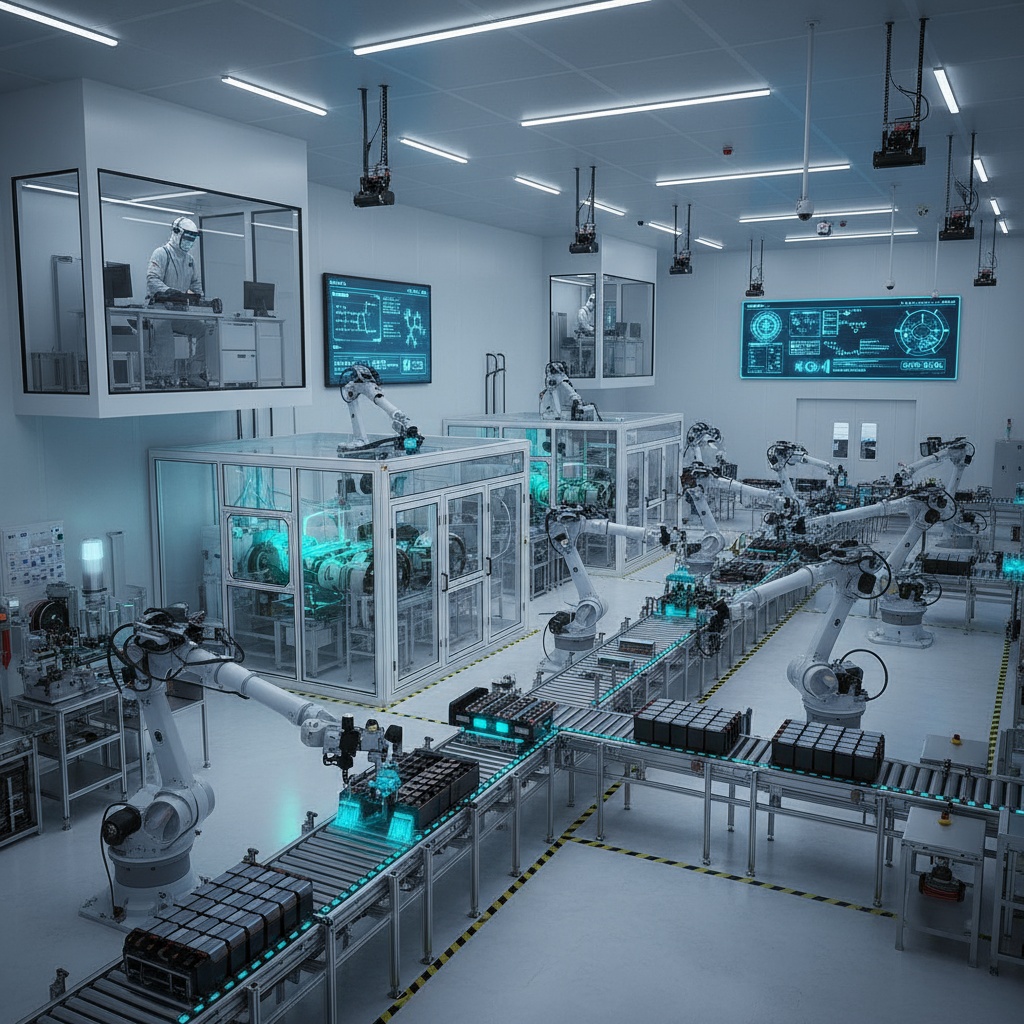Emerging Technology Risks in Battery Manufacturing: A Comprehensive Insurance Guide
Published: October 2025 | Insure24 Commercial Insurance Insights
Introduction: The Battery Manufacturing Revolution
The battery manufacturing sector is experiencing unprecedented technological transformation, driven by the global shift towards electric vehicles, renewable energy storage, and advanced electronic devices. While this evolution presents remarkable opportunities, it also introduces complex and emerging risks that can significantly impact businesses in this cutting-edge industry.

Technological Landscape: Understanding the Battery Manufacturing Ecosystem
Modern battery manufacturing is a complex ecosystem involving multiple advanced technologies:
- Automated robotic assembly lines
- Advanced materials engineering
- Artificial Intelligence (AI) quality control systems
- Machine learning predictive maintenance
- Internet of Things (IoT) integrated manufacturing
Cyber Risk: The Silent Threat in High-Tech Manufacturing
Vulnerability Points in Battery Production
Battery manufacturing facilities represent prime targets for cyber attacks due to their technological complexity and high-value intellectual property. Key vulnerability areas include:
- Automated Control Systems: Potential for remote manipulation of production lines
- Design Databases: Intellectual property theft risks
- Supply Chain Management Systems: Potential disruption of critical material procurement
- Quality Control Algorithms: Potential tampering with AI-driven quality assessment
Potential Cyber Attack Scenarios
- Ransomware targeting production management systems
- Intellectual property theft of battery design algorithms
- Sabotage of automated quality control mechanisms
- Supply chain disruption through strategic system infiltration
Physical Risk Management: Beyond Cyber Threats
Chemical and Material Hazards
Battery manufacturing involves handling volatile and potentially dangerous materials, presenting significant physical risks:
- Lithium-ion battery chemical instability
- Potential thermal runaway scenarios
- Toxic material exposure risks
- Complex material handling requirements
Fire and Explosion Risks
The unique chemical composition of advanced batteries creates specialized fire and explosion risks:
- Thermal runaway in lithium-ion battery production
- Potential chemical reaction cascades
- High-energy material storage challenges
- Complex fire suppression requirements
Technological Complexity: Insurance Implications
Evolving Insurance Product Requirements
Traditional insurance models struggle to address the nuanced risks in battery manufacturing. Modern policies must consider:
- Rapid technological obsolescence
- Complex interdependency of technological systems
- High-value intellectual property protection
- Dynamic risk assessment models
Recommended Insurance Coverage
- Cyber Liability Insurance: Comprehensive protection against digital threats
- Product Liability Insurance: Coverage for potential battery performance failures
- Professional Indemnity Insurance: Protection for design and engineering risks
- Business Interruption Insurance: Coverage for technological system failures
- Property Insurance: Specialized coverage for high-tech manufacturing environments
Emerging Technologies: Risk Mitigation Strategies
Technological Safeguards
- Advanced cybersecurity infrastructure
- Regular penetration testing
- AI-driven risk prediction models
- Comprehensive employee training programs
Insurance Risk Reduction Techniques
- Implement robust risk management protocols
- Maintain detailed technological documentation
- Conduct regular third-party risk assessments
- Invest in continuous technological training
Future Outlook: Adaptive Risk Management
The battery manufacturing sector will continue to evolve rapidly, requiring dynamic and adaptive risk management approaches. Insurance providers must develop flexible, technology-responsive coverage models that can keep pace with technological innovation.
Conclusion: Navigating Technological Uncertainty
Battery manufacturing represents a critical intersection of technological innovation and complex risk management. By understanding emerging risks and implementing comprehensive insurance strategies, businesses can confidently navigate this dynamic landscape.


 0330 127 2333
0330 127 2333